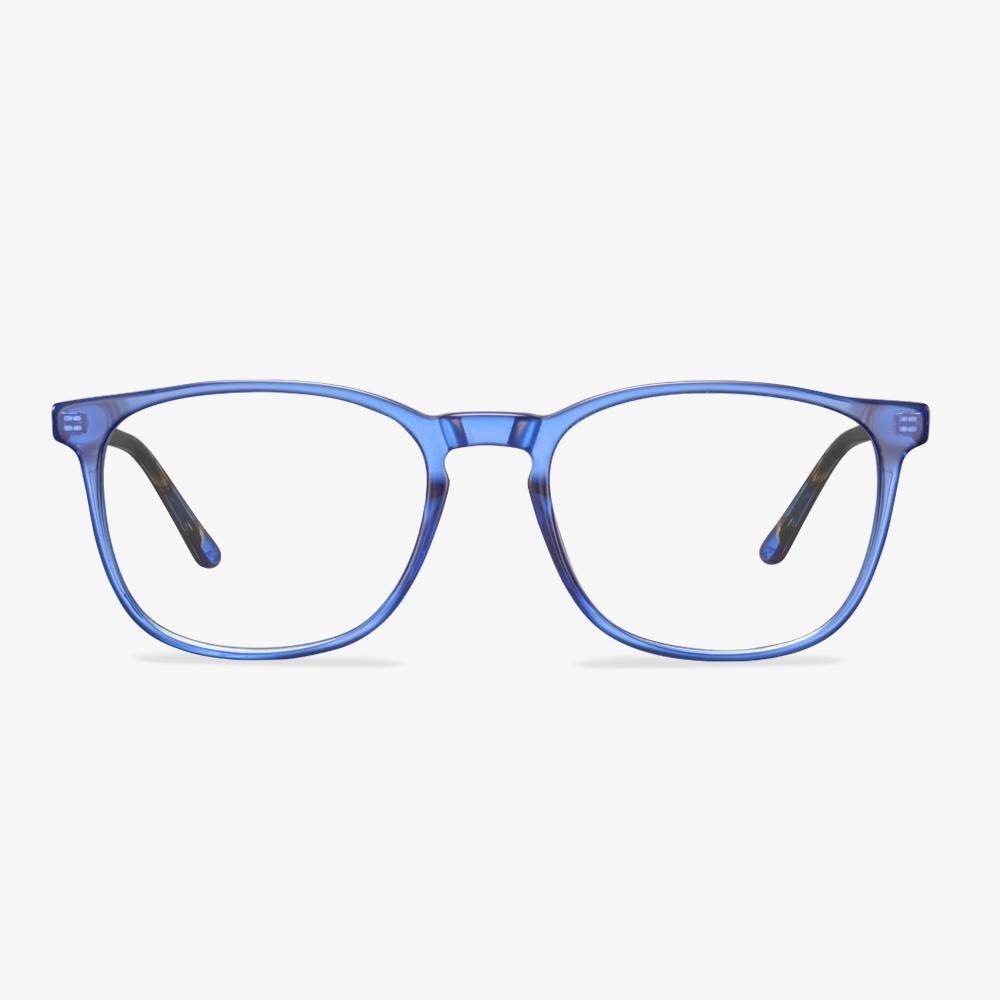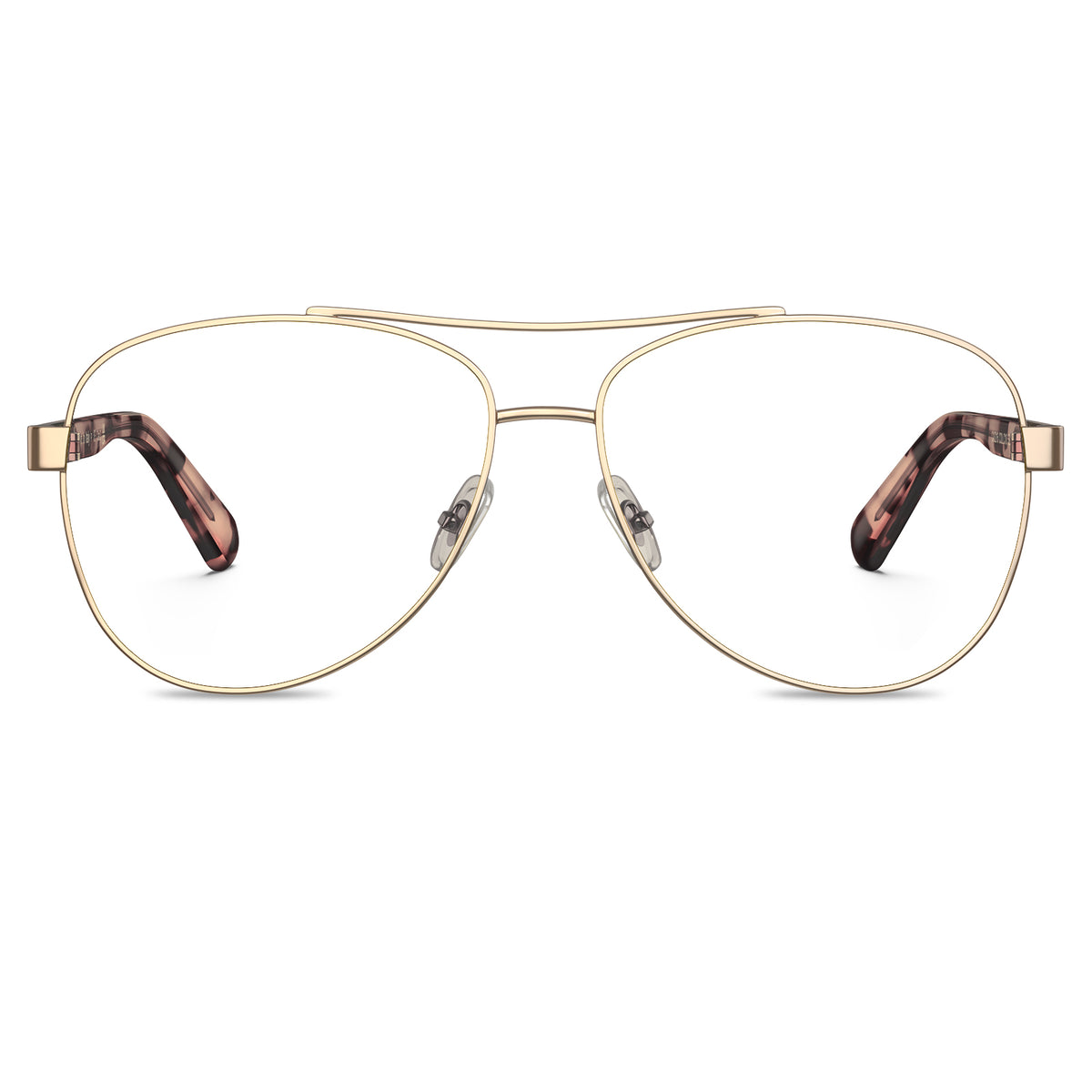Types of Single Vision Lenses
Single vision lenses come in several different types including the 1.59 polycarbonate single vision, 1.57 mid-index single vision and polarized single vision.
1.59 polycarbonate single vision lenses are characterized by their durability and impact resistance. They often include an anti-scratch coating or anti-reflective coating. This lens is much lighter and thinner than a traditional plastic lens, and it blocks the sun’s harmful UV, offering maximum UV protection.
1.57 mid-index single vision lenses are thinner than regular plastic and moderately lighter and stronger. They come with an anti-scratch coating or anti-reflective coating. These lenses are an ideal option for people with relatively higher prescriptions. But they are thicker than the polycarbonate lenses.
Polarized single vision lenses are sunglasses that protect your eyes from light that bounces off smooth, highly reflective surfaces like asphalt, snow, and water. These lenses work by controlling certain light properties and limiting specific wavelengths. They boast a vertical filter that does not allow horizontal glare to pass through.
How to choose the right glasses for myopia?
Nowadays, people are nearsighted, and they usually think of going with a pair of glasses. However, only from the media, we continue to see that there are substandard myopia glasses and frames in the report, so how should we choose when we buy glasses? How can I match a pair of suitable and high-quality glasses? Different glasses shops vary greatly from optics technology to the quality of lens frames, so different shops have different prices. Faced with a variety of glasses, how should we choose? Generally, we can look at these four standards. First, take a look at whether the eyewear company has obtained a production license for eyewear products. Second, see if the optometry equipment and testing instruments of the glasses companies have qualified marks. Third, see if the optometry and production staff are certified to work. Forth, look at whether the glasses have a conformity mark (certificate). The four certificates of eyewear companies are the prerequisite to ensure the quality of glasses.
Can titanium temples be bended?
Using titanium alloy as the main material, the strength of the spectacle frame becomes larger and the density is smaller. Strong for the frame can be a good guarantee of the structure of the frame, and small density can effectively reduce the weight of the frame, so as to reduce the pressure on the ears and nose of the frame. The toughness of titanium alloy is very good, which can effectively avoid the breaking, bending deformation of the spectacle frame because of an accident.
It is recommended not to bend without authorization. There are many special tools for adjusting glasses. Bending by hand is easy to cause fracture because the force is concentrated at one point. You can take your glasses to a nearby optical shop and have them adjust them. Many big optical shops do this for free.
Blue light and anti-reflective lenses
They reduce the potential for cumulative damage to the eyes.Allowing the beneficial blue light through improves clarity, they reduce glare and reflection. They can improve your visuals and reduces eye strain and nighttime reflexes. They can reduce the symptoms of computer vision syndrome, including eye strain, eye strain, and headache.
The disadvantages of progressive lenses
- The field of view in the near and middle distances is relatively narrow.
- The adaptation time is longer and patients with greater astigmatism are not suitable for wearing.
- The peripheral aberration is large, and there will be large astigmatism in the periphery.
Why do glasses with the same prescription feel different?
The clarity of the lens changes. In addition to the case of the frame, the lens will be yellow or slightly scratched during use due to long-term absorption of ultraviolet rays, oily contact, dry rubbing by the user, etc., and the clarity of the lens will be affected. However, the clarity of newly equipped glasses tends to be higher, and the comparison between the two will cause discomfort. It is recommended that the new glasses can be used early the next morning. After a night's rest, the eyes will be easier to adapt to the new glasses. Under normal circumstances, new glasses generally require an adaptation period of about a week. After a few days of continuous wearing, the uncomfortable symptoms will disappear.
What are polarized lenses for?
Polarized lenses contain a layer of polarizing plates in which molecular chains form a light-grating structure in which dichromatic pigments, which absorb polarized light, are evenly distributed. A beam of light is absorbed when it vibrates in the same direction as the bars of the molecular chain of the polarized lens. The grating direction formed by the molecular chain of the polarizer is the axial direction of the polarizer, which is generally horizontal. When polarized lenses are worn, they absorb all the light that vibrates horizontally, thus absorbing the glare and preventing it from reaching the eyes.







































